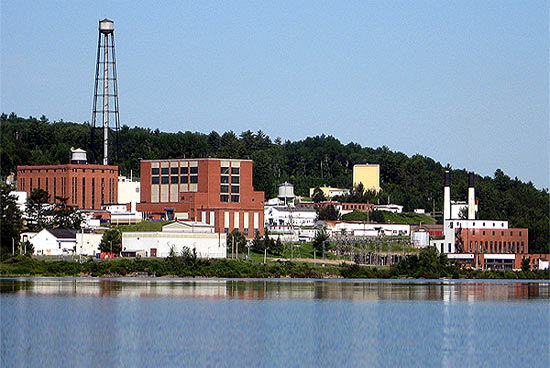Yesterday, I blogged about a loan program at the U.S. Department of Energy's National Nuclear Security Administration aimed at the development of domestic sources of Molybdenum-99 (Mo-99), a radioactive isotope that is critical for most medical imaging systems. Mo-99 has a half-life of about three days. Then it decays into technetium-99 which is the isotope that is actually used in medical imaging. Because of its short half-life, Mo-99 cannot be stockpiled and so it must be constantly produced.
Currently, five reactors in Belgium, the Netherlands, Canada, South Africa and Russia produce most of the commercial Mo-99 in the world. The primary method of production is based on bombarding highly enriched uranium with neutrons. Because of the dangers of proliferation of nuclear weapons, other methods of production not involving highly enriched uranium are being developed. In my last blog, I mentioned that Canada produces as much as forty percent of the world's supply of Mo-99 in its NRU reactor which is slated for shut down in 2016. It turns out that this will not be the end of Mo-99 production in Canada.
The Canadian Medical Isotope Project (MIP) just used the Canadian Light Source linear accelerator in Saskatoon, Saskatchewan to produce a batch of Mo-99 that did not require a nuclear reactor. The CLS contains a target of enriched molybdenum-100 (Mo-100). The target is bombarded with high-energy X-rays which knock single neutrons out of the Mo-100 atoms which results in the creation of Mo-99.
The Canadian government has allocated over fifty billion dollars since 2010 to the development of non-reactor sources of useful radioisotopes through the Isotope Technology Acceleration Program (ITAP). The Saskatchewan Government and ITAP are funding the MIP in partnership with the Prairie Isotope Production Enterprise (PIPE). The MIP is testing the production of isotopes until they obtain approval from Health Canada, the Canadian national health regulatory agency. It is anticipated that upon completion of testing and approval, this project will be able to supply Mo-99 to healthcare facilities across Western Canada by 2016.
CLS has stated that just three accelerators systems could produce enough Mo-99 to supply all of Canada's domestic needs for the radioisotope. CLS hopes to that the commercialization of Mo-99 productions from accelerators will provide sufficient funding to extend production and seek foreign markets.
The Canadian announcement about new processes for M0-99 production came just a few days after the U.S. Department of Energy's National Nuclear Security Administration announced an eight million dollar loan program aimed at new methods of production of Mo-99 that do not utilize highly-enriched uranium. The timing of the Canadian announcement is very interesting. Is it possible that Canada which has announced the shut down of the reactor currently producing forty percent of the global supply of Mo-99 is concerned about losing that market share due to efforts of other countries such as the U.S. to produce their own Mo-99 internally? Perhaps the recent Canadian announcement was intended to reassure current Canadian customers for Mo-99 that Canada will continue to be a major source for Mo-99 after the scheduled closing of the NRU reactor.
Canada's NRU reactor:
